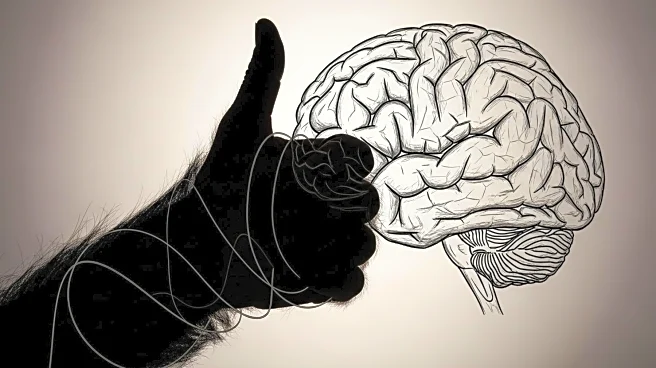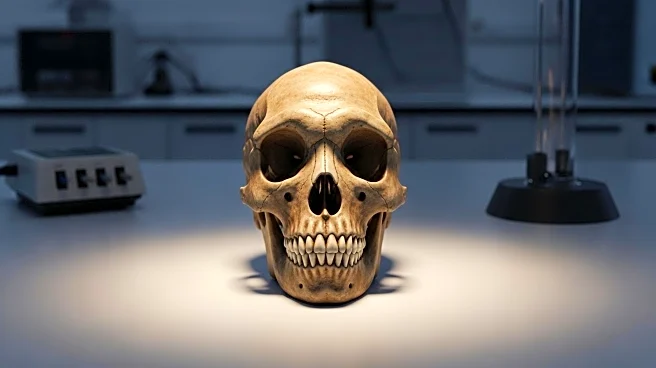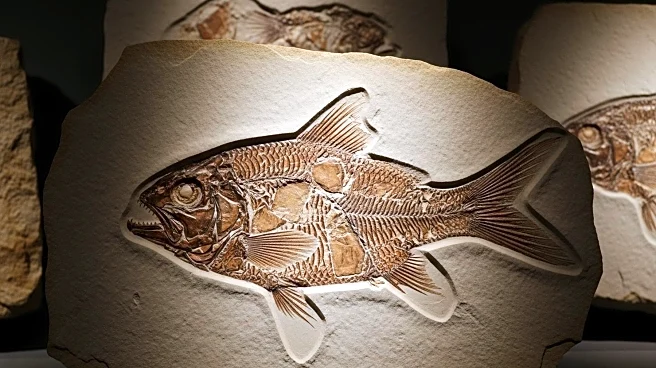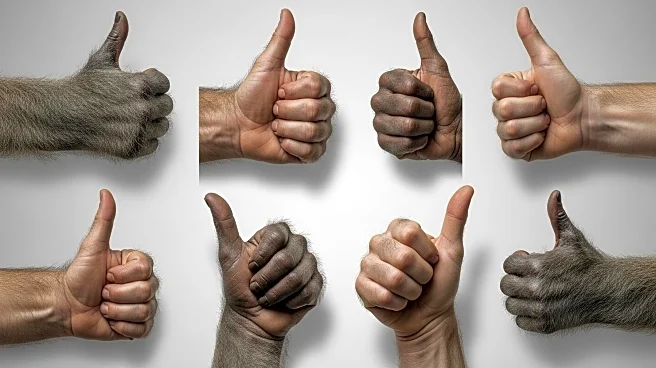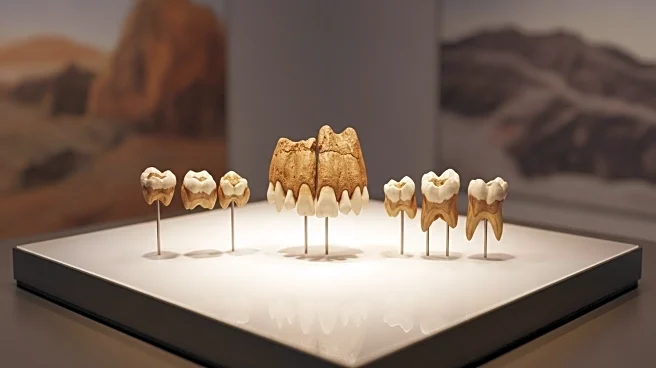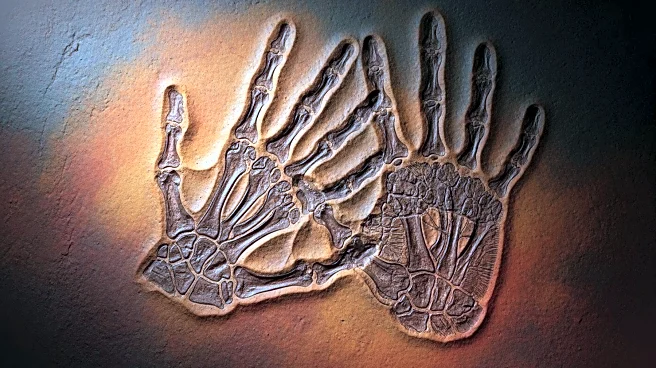What is the story about?
What's Happening?
A recent study published in Nature investigates the evolution of hominin bipedalism by analyzing developmental stages of human and mouse samples. The research involved collecting human samples from first-trimester termination procedures and later-stage post-mortem imaging data, following ethical guidelines. Mouse samples were obtained from a wild-type mouse line. The study utilized histological analysis, CT scanning, and multiomics to examine the pelvic girdle and surrounding tissues. The research aimed to understand the morphological and genetic factors contributing to bipedalism, using advanced imaging and genetic sequencing techniques.
Why It's Important?
This study provides significant insights into the evolutionary biology of humans, particularly the development of bipedalism, which is a defining characteristic of hominins. Understanding the genetic and morphological changes that led to bipedalism can shed light on human evolution and the adaptations that distinguish humans from other primates. The findings could have implications for evolutionary biology, anthropology, and medical research, particularly in understanding musculoskeletal disorders and developmental biology.
What's Next?
Future research may focus on expanding the dataset to include more diverse samples and developmental stages, potentially involving other primate species. Researchers might also explore the genetic pathways identified in this study to understand their roles in other aspects of human evolution. Collaboration with other institutions could enhance the scope and impact of the findings, leading to a more comprehensive understanding of human evolutionary history.
Beyond the Headlines
The study raises ethical considerations regarding the use of human developmental samples, emphasizing the importance of adhering to ethical guidelines and obtaining proper consent. It also highlights the potential for advanced imaging and genetic techniques to revolutionize our understanding of evolutionary biology, offering new perspectives on the complex interplay between genetics and morphology in human evolution.
AI Generated Content
Do you find this article useful?


